POPP5036 Project Management Assignment Sample
Module code and Title: POPP5036 Project Management Assignment Sample
1.Introduction
In this report a project management case study will be discussed. This report will discuss the case study of organizing a cultural event by the Blue Mile, which is an UK based company. The cultural event of the company has an environmental and economic impact.
Blue Mile is the first company which organized an event of water that focused on sensitive peoples to provide clear water each day. In this report some literature will be discussed to understand the importance of organizing the cultural events of the organizations. Literature reviews will help to gain knowledge about the project management analysis. The case study of organizing cultural events will be disguised in detail to understand the main objective of the report. The opportunities and benefits of water events will be disguised in this report.
The social value as well as the economic value of the water event will also be discussed by the report. The sustainable development with water events and the social responsibility engaged in the event will be analyzed by the project. It is very common that each event has some negative impact on the environment and society, the negative impact of the water event of Blue Mile will also be discussed by the research in this project. Based on the analysis some recommendations will be discussed that help to make improvement in this organizing water event by the Blue Mile.
2.0 Project planning
2.1 Project objective
This section discusses the objective of the project. Objective section of the project helps to understand the main reason for conducting the project. The main objective of this project is to discuss a case study of organizing a cultural event that has a sustainable impact on the environment. Some other objective of this project is to discuss the social and cultural impact of the water event organized by the Blue Mile [1]. Providing useful recommendations for improvement in the organize cultural event is also an objective of the project report.
2.2 Project aims
This section of the project discusses the main aim of conducting the project. The aim of the project is to clearly discuss the case study of water events organized by the Blue Mile. The discussion about the social responsibility and social as well as economic value of the cultural event is also another aim of conducting the project [2].
The aim of the project is to discuss the importance of cultural events in the organization by discussing economic and environmental impact assessment of Blue Mile. Discussion about the negative impact of cultural events on the society and the economy is also a big aim of conducting this case study-based project.
3.0 literature reviews
According to Dinar et al., 2019, Water changes throughout the year and season are expected to grow due to climate change. Lacks a river basin Political tension can have an impact on institutional capacity, such as contracts to manage environmental change. The Basin at Risk project’s country dyad event data from 1948 to 2008 is used in this article. In contrast to these, pools maintained through contracts enjoy less conflict over shared water and more cooperation. Ungoverned catchment area under the treaty.
In addition, it compares pool laws before and after the treaty. Only the outcome is presented. Although signing a contract supposedly strengthens collaboration, there is little evidence to back this assumption. Support for the idea that the presence of waterside agreements encourages collaboration, especially when water fluctuations are taken into account [3].
This factor is significant and positively correlated with the increase. Collaboration: Reliable outcomes in a variety of conditions and circumstances, variables related to geography, politics, and the economy. This might mean that efforts to approach subsequent contracts successfully are succeeding a few of their forerunners’ flaws. Crucial in separating competing and complementary thing.
The idea that contracts or the volume of contracts would lessen disagreements was not supported by any instances or research. This can emphasize the value of handling conflicts and cooperating personally rather than just doing the complete spectrum’s antipode. The literature is helpful to understand the use and importance of cultural events. It helps to explain the case study of organizing water events more effectively.
According to Simonovic, S.P., 2020, the complexity of water resources management challenges and the level of uncertainty they are subject to are directly impacted by global change, which stems from population expansion, global warming, and land use change.
The physical environment, the social environment, and the built infrastructure environment, which includes pipelines, roads, bridges, buildings, and other components, are the three fundamental systems that interact dynamically to produce both complexity and uncertainty [4]. The consideration of the entire region that will be impacted, the explicit incorporation of all costs and benefits, the development of numerous alternative solutions, and the active involvement of all stakeholders in the decision-making are recent trends in dealing with complex water resource systems.
In the second half of the 20th century, systems techniques based on simulation, optimization, and multi-objective analyses, in deterministic, stochastic, and fuzzy forms, have shown tremendous promise for aiding efficient management of water resources. The management of water resources may change in the future thanks to developments in systems theory, which are explored in this study. Paper outlined as a structured framework for enhancing performance-based water resources engineering In order to improve the sustainable management of water resources, system approaches need to be modified.
A situation. Illustration Understanding the fundamentals of water supply network management in dynamic environments is helpful. Principles for performance-based decision-making in the engineering of water resources. This literature review helps to understand and gain knowledge about the organizer of water events. The knowledge helps to conduct the economic and environment impact assessment of Blue Mile more effectively to make the project more useful for the readers.
4.0 Case study discussion
A brand-new open water public participation event in the UK called The Blue Mile – Race for Environment seeks to increase awareness of and respect for the marine environment. In July 2010, Plymouth played host to the first event. SERIO (University of Plymouth) assessed the event’s economic impact using a thorough street survey and an adaptation of the methodology suggested by event IMPACTS (Mendes et al. 2018).
Estimates of greenhouse gas emissions brought on by attendees travelling to the event served as the foundation for an initial evaluation of Blue Mile’s environmental impact. The findings point to a positive influence Blue Mile may have had on participants’ and other visitors’ views and perceptions of the environment and environmental challenges in terms of a broader social impact.
The majority of respondents agreed, at least somewhat, that drawing in events like the Blue Mile was good for Plymouth’s reputation. They were also overwhelmingly enthusiastic about the event’s effects on the neighborhood and community [5]. This was requested of the University of Plymouth-based SERIO in 2010. Creation of a monitoring system to assess the effectiveness and outcomes of this project’s measures. SERIO is analyzing the socioeconomic and environmental effects of the “Blue Mile” event as part of this objective.
4.1 Key finding of The Blue Mile
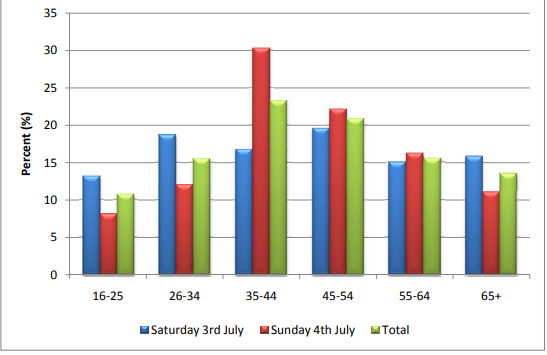 Figure 1: Age of Respondents (Source: blue mile case study)
Figure 1: Age of Respondents (Source: blue mile case study)
There is data which is collected from a street survey shows that 53.4% of respondents are male in the other hand, whereas 46.6% are female. This data clearly shows that male respondents are more than female respondents this record is recorded on Sunday[19].
The research is also based on the age group among the people. According to the survey the people who are between 35 to 45 years are largely seen on Sunday. The young generation who are between 16 to 34 years is shortly seen on Sunday compared to the old generation. In the above figure, it can be clearly shown that the young pair is the largest proportion for visiting the Blue Mile as compared to children.
This data that is collected through the street also indicate that for the marketing proposal the marketing method which is based locally such as filers and posters an effective method for the young generation but for the old generation newspaper, radio, and television is the best.
The Blue Mile is So9 Company as many of the people said that they used to visit Plymouth because of Blue mile. They all want to see Blue Mile. The Blue Mile event is the best opportunity for those who wanted take do something in racing and some activities which are related to entertainment. The Blue Mile race is the most awaited race for them and after completing their registration they are also able to participate in other entertainment activities.
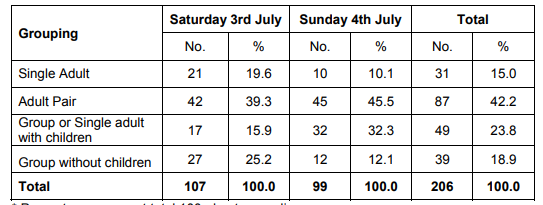 Figure 2: attendance grouping (Source: blue mile case study)
Figure 2: attendance grouping (Source: blue mile case study)
The above table shows the attendance grouping. Single adults, adult pairs, and groups without children are the parts of the attendance grouping. There are 3rd July and 4th July, which is a times for the attendance grouping. The single adult is 3rd July is no 21 and % is 19.6.
Single adult of attendance grouping in 4th July is 10, and % is 10.1. The total of the single adult is no, 31, % is 15.0. The adult pair is 42 on 3rd July and 45 on 4th July. Total is 31 and % is 42.2. “Group without children” of attendance grouping is 27 on 3rd July and 12 on 4th July. The total value is 39 and % is 18.9. Attendance on 3rd July, and 4th July is n=107, n=99.
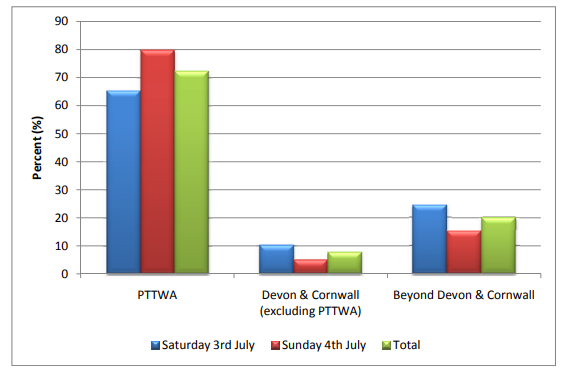 Figure 3: domicile of respondents (Source: blue mile case study)
Figure 3: domicile of respondents (Source: blue mile case study)
The above figure shows the domicile of respondents. The Blue zone shows Saturday 3rd July, the red zone shows Sunday 4th of July, and the green zone shows the total values. The red zone’s values go up to 80. The Blue zone’s values go up to 65. The value of n is 206. In the above figure, the y-axis shows the percent.
4.2 Awareness of and Involvement in the Blue Mile
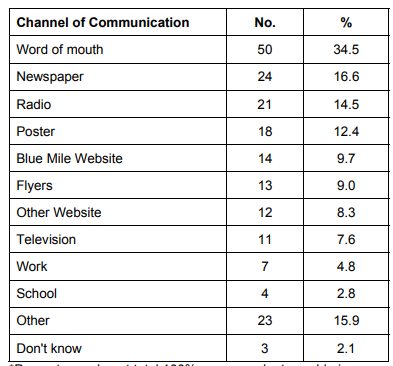 Figure 4: Awareness of and Involvement in the Blue Mile (Source: blue mile case study)
Figure 4: Awareness of and Involvement in the Blue Mile (Source: blue mile case study)
The above figure shows the awareness of the blue mile. there are various types of channels of communication, like word of mouth, radio, flyers, television, work, poster, etc. word of mouth no is 50, radio of no is 21, flyers no is 13, work no is 7, school no is 4 and the percentage is 34.5,14.5,9.0,2.8,7.6, etc.
the value of n is 145. The blue mile webpage is very important for the channel of communication section[20]. No of the blue mile webpage is 14 and the percentage is 9.7. The data from the street survey shows locally established marketing processes. Despite a high ratio of people are existing aware of the “blue mile prior” to their stay more than one-quarter of respondents.
This highlight needs to improvement\ents in the promotion of the occasion 26.7%. Respondent’s involvement in the “blue mile” was also examined. The “blue mile” event contained the chance to register to achieve the “blue mile races” [21]. A higher ratio of the male is respondent with children. They are indicated in various parts of more activities. A group of children visited the event in the village. The age limit of the event is between 17 and 54.
5.0 Critical analysis
5.1 Project benefits and opportunities
For the water event Blue mile, two type of survey is conducted. First survey is a street survey and the second is an open space survey. Both the survey is conducted to measure the impact of the event and the achievement through the event. A “semi-structured face-to-face street survey” was carried out during the Blue Mile to gauge the event’s socioeconomic and environmental effects [6]. In two days, 206 interviews in all were done.
This included pre- and post-event surveys to collect outdoor open space views and usage that each project participant completes before and after attending a project-specific event. A total of 44 pre-event surveys were completed by an online survey of registered Blue Mile participants. Meanwhile, 123 Blue Mile participants were asked a subsection of important questions through a street survey during the two-day event.
5.2 Economical value
The UK’s approach to sport has been suggested as a suitable example for determining an event’s economic impact due to the nature of Blue Mile’s sport. However, the majority of Blue Mile attendees were locals, and the event’s numerous activities made it difficult to use British sports approaches and necessitated their adaptation [7].
When analyzing the Blue Mile’s economic impact, the following factors should be taken into account: First, due to the tiny number of outside respondents and the effect on overall spending, housing costs, typically one of the most crucial determinants in economic effectiveness, were remarkably low.
Due to factors including the one-day race, the two days of various activities, probable limitations on promoting cross-regional events, and severe weather on Sundays, there may be a maximum of one participant. Perhaps limited to Participating in an event reduces the financial impact’s scope [8]. The visitor’s quotes’ veracity and the method used to assess them both play a role in how solid the total quote is.
5.3 Environmental value
Given the problems linked with climate change and its potential future political and economic effects, evaluating an events or projects environmental impact is becoming more and more crucial. Calculate the number of miles that survey participants who went by car, bus, rail, taxi, or ferry travelled to attend an event using Defra’s traffic conversion factor with some restrictions, these findings must be understood.
First, it depends on the accuracy of the estimated attendance figures and the estimated distance that each visitor is said to have gone to the event. Additionally, they offer a distorted picture of the entire environmental impact [9]. A thorough life cycle analysis covering all potential greenhouse gas sources, such as waste management and energy use, is necessary for an environmental impact assessment. This, however, was outside the purview of the assessment. The street survey is conducted by using “Defra’s transport conversation factor”. The visitors travel through the taxi, bus, car and train to attain the event.
5.4 Sustainable development
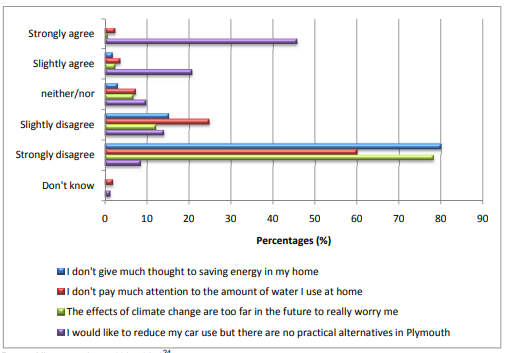 Figure 5: Sustainability of Blue Mile (Source: reserachgate.net)
Figure 5: Sustainability of Blue Mile (Source: reserachgate.net)
First, SERIO frequently uses electric transportation to plan and relocate events and activities, which produces greenhouse gases linked to climate change. Second, a growing number of sporting and cultural initiatives, such Blue Sound and Stepping Stones to Nature, are dedicated to fostering environmental awareness and sustainable behavior. The table above displays the findings[10]. As it can see, the majority of respondents strongly agree (61.9%) with the statement that regional freedom is crucial.
In addition, 45.5% of respondents want to do more to safeguard Plymouth’s marine environment, although it’s important to remember that 25% of them disapproved. This information should not be construed as a sign of indifference, however, as many respondents abroad believe they have done all they can to improve the environment and cannot do much more.
With 74.4 percent of respondents in agreement, there was also a high consensus about Plymouth citizens’ recycling responsibilities(Blondelet al. 2019).On the other hand, when asked if Plymouth could make better use of the environment, 6 out of 10 respondents said they were “very” or “strongly,” and 25% said they were.
5.5 Corporate social responsibility
The new idea of “corporate social responsibility” goes past foundation as well as expects organizations to act morally in deals. The triple bottom-line way to deal with “corporate social responsibility” highlights the organization’s obligation to carrying on with work in a financially, socially as well as ecologically supportable way. CSR depends on the possibility that effective as well as productive organizations have to be socially mindful, augment the interests and abundance of their investors, as well as simultaneously carry on with work in manners that assist with tackling social issues [11].
This idea consolidates the idea of human prosperity along with stresses interest in the social parts of carrying on with work that is straightforwardly connected with the personal satisfaction of society. The word liability implies that a corporate association has a commitment to the general public where it carries on with work, handles social issues, as well as is accepted to offer something other than financial labor along with the products.
5.6 Negative impact
Nearly all respondents agreed that Plymouth was the ideal location to host Blue Mile 2010 after taking into account a variety of factors, including the event’s location and the impact it had on the area. “The incident had a beneficial impact. The thoughts of regular tourists were validated in “Image of Plymouth.” People have more opportunities to participate in water activities because of the Blue Miles. Furthermore, the majority of survey participants disagreed.
The event, according to all of the responders, had a detrimental effect on the city’s traffic and pollution issues[12]. The majority of respondents agreed to some extent that “Plymouth was an excellent venue to hold Blue Mile 2010” and did not believe that the event would negatively impact the city’s traffic and pollution levels. Nearly all respondents said they would return to the Blue Mile, and several said they would take part in other races and activities at the event.
6.0 Organization strategy
In keeping with the primary goal of the Blue Mile, this contributes to the event’s sustainability and can be used effectively as a component of a broader marketing campaign to promote the “Zero Carbon” Blue Mile. Increase[13]. This should think about developing a more thorough monitoring system for evaluating environmental impacts based on the idea of entire lifecycle analysis to ensure event sustainability. It can be included into a marketing plan to advertise “zero carbon” blue miles.
7.0 Recommendation
The resulting funding from the survey of the water event called Blue mile was very successful and gave a positive impact on the environmental and economical issues. Following points are discussed that should help the event to get future opportunities:
- Marketing: According to media evaluations, a range of media were used and regional media coverage was well-balanced. However, the event is farther away and can be promoted more completely, especially outside of the local area, given the most popular visitor ideas[14]. This will boost the number of participants, draw in more visitors from beyond Plymouth, and could even be profitable.
- Communication: It requires thinking about enhancing on-site information about the event’s planners, offering directions, improving accessibility to available facilities, and providing clearer communication about registration requirements and the specifics of the daily event schedule. It is suggested.
- Measuring total number of visitors: The precision of the projected number of Blue Mile visitors has a significant impact on how reliable the economic impact assessment is. It should think about developing suitable visitor counting techniques moving forward, especially for events without tickets[15]. In the future, it is suggested to keep an eye on who enters the event village and to think about handing out “free admission tickets” that double as entrance programmers and flyers.
- Measuring the impact of the event: This report’s environmental impact evaluation is only concerned with how visitors’ travel patterns affect the environment. It is suggested that a strong environmental impact assessment monitoring system be developed for upcoming Blue Mile events based on the idea of entire lifecycle analysis.
8.0 Future scope
- While being advertised further and in greater detail, the event will continue to leverage traditional media and the Internet to reach individuals beyond the area and younger age groups more efficiently.
- To expand the event village, offer more varied entertainment, draw larger audiences, and charge more for attendees, it might think about scheduling a variety of races on both days.
- Future visitor counts should take into account more reliable methods. Provide a “free ticket” at the entrance to the Event Village to guarantee a more precise estimate of visitor numbers and, consequently, a more thorough analysis of the economic impact.
- This should think about developing a more thorough monitoring system for evaluating environmental impacts based on the idea of entire lifecycle analysis to ensure event sustainability.
- The open space pre-event survey results offer helpful understandings into respondents’ sentiments regarding neighborhood open spaces, guaranteeing that all projects can function properly and that people use open spaces more frequently. It emphasizes relevant practical concerns that support it.
9.0 Conclusion
The case study of project management is described in this report. The case study of a cultural event hosted by the UK-based business Blue Mile is described in this report. Ecological and financial effects result from the company’s cultural events. The first company to offer daily clear water and arrange water events targeted at sensitive individuals is Blue Mile. The literature reviewed in this paper helps readers understand why it’s important for organizations to offer cultural events. It can learn about project management analysis by doing literary studies.
Case studies of holding cultural events are provided in depth to help the reader comprehend the report’s principal goal. The opportunities and advantages of water events are hidden in this paper. The report also explains the social and economic benefits of water events. This research examines the impact of water events on social responsibility and sustainable development.
The study for this project also discusses the negative effects of the Blue Mile Water event. It is extremely typical for all events to have an adverse effect on the environment and society. This offers some suggestions for improving this planned water event through the Blue Mile based on our findings.
Reference List
Journals
[3]Dinar, S., Katz, D., De Stefano, L. and Blankespoor, B., 2019. Do treaties matter? Climate change, water variability, and cooperation along transboundary river basins. Political Geography, 69, pp.162-172.
[4]Simonovic, S.P., 2020. Systems approach to management of water resources—Toward performance based water resources engineering. Water, 12(4), p.1208.
[5]Mendes, K., Ringrose, J. and Keller, J., 2018. # MeToo and the promise and pitfalls of challenging rape culture through digital feminist activism. European Journal of Women’s Studies, 25(2), pp.236-246.
[6]Pirnar, I., Kurtural, S. and Tutuncuoglu, M., 2019. Festivals and destination marketing: An application from Izmir City. Journal of Tourism, Heritage & Services Marketing, 5(1), pp.9-14.
[7]Harfiani, R. and Mavianti, E.F.T., 2022, February. Cultural Education’aisyiyahIn Medan. In PROCEEDING INTERNATIONAL CONFERENCE ON LANGUAGE, LITERATURE AND CULTURE (Vol. 1, p. 416). umsu press.
[8]Romero-Ivanova, C., Shaughnessy, M., Otto, L., Taylor, E. and Watson, E., 2020. Digital practices & applications in a COVID-19 culture. Higher Education Studies, 10(3), pp.80-87.
[9]Zhuravlev, O., Savelyeva, N. and Erpyleva, S., 2020. The cultural pragmatics of an event: The politicization of local activism in Russia. International Journal of Politics, Culture, and Society, 33(2), pp.163-180.
[10]To’raqulovich, J.U. and Supxonovna, H.N., 2021. Ways to shape a healthy lifestyle in the family of preschool children. Middle European Scientific Bulletin, 11.
Malchrowicz-Mośko, E. and Poczta, J., 2018. A small-scale event and a big impact—Is this relationship possible in the world of sport? The meaning of heritage sporting events for sustainable development of tourism—Experiences from Poland. Sustainability, 10(11), p.4289.
[11]Hartmann, S., Weiss, M., Hoegl, M. and Carmeli, A., 2021. How does an emotional culture of joy cultivate team resilience? A sociocognitive perspective. Journal of Organizational Behavior, 42(3), pp.313-331.
Blondel, D. and Lutolf, M.P., 2019. Bioinspired hydrogels for 3D organoid culture. CHIMIA International Journal for Chemistry, 73(1), pp.81-85.
[12]Luz, W.P., Pinto, G. and Bonifácio, R., 2018, October. Building a collaborative culture: a grounded theory of well succeeded devops adoption in practice. In Proceedings of the 12th ACM/IEEE International Symposium on Empirical Software Engineering and Measurement (pp. 1-10).
[13]Lukinmaa, P., 2022. St. Petersburg LGBTQI+ Activists Negotiating Financial and Symbolic Resources. In Resourceful Civil Society (pp. 319-342). Palgrave Macmillan, Cham.
[14]Li, K., Mai, F., Shen, R. and Yan, X., 2021. Measuring corporate culture using machine learning. The Review of Financial Studies, 34(7), pp.3265-3315.
[15]Xayrulloyeva, D., 2021. The gradual development of native language textbooks for grades 3-4 in primary school. центрнаучныхпубликаций (buxdu. uz), 7(7).
[16]Veissière, S.P., Constant, A., Ramstead, M.J., Friston, K.J. and Kirmayer, L.J., 2020. Thinking through other minds: A variational approach to cognition and culture. Behavioral and brain sciences, 43.
[17]Ahmann, C., 2018. “It’s exhausting to create an event out of nothing”: Slow Violence and the Manipulation of Time. Cultural Anthropology, 33(1), pp.142-171.
[185]Castellani, P., Giaretta, E., Brunetti, F. and Bonfanti, A., 2019. Exploring the modes of organizational learning: features from the Open Factory event. Sinergie Italian Journal of Management, 37(1), pp.197-216.
[19] Dwyer, C., 2018. Analysis of the Economic Development of Statesboro, Georgia’s Blue Mile: A Structural Approach for Diversification.
[20] Peart, M.D., 2019. Accuracy of 3D Point-Cloud and Photo-Based Models of City Street Intersections.
[21] Van den Broeck, P., Emergency Governance and Emerging Conflicts: the Case of Italsider Area in Bagnoli (Naples, Italy).
Appendix
Appendix 1: PESTLE ANALYSIS
| Political Factor | Economical factor |
| ● Rules and regulation for cultural events
● Tax policy |
● Economical impact of event
● Economic growth through event |
| Social factor | Technological factor |
| ● Visitors response
● Social impact |
● Impact of advance technology
● Use of technology in the event |
| Legal factor | Environment factor |
| ● Legal engagement
● Legal procedure |
● Positive impact on environment
● Negative impact on environment |
Know more about UniqueSubmission’s other writing services:


1 Comment